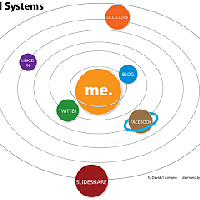Home
About Us
Page 2
A federal student loan is a specific type of loan that is aided to the student from the federal government; this allows the student to loan what the student needs financially. There is no need to pay the money back until the student has graduated from college or has otherwise decided to stop attending school. This loan can be used for books, transportation, moving costs, or a variety of other scholastic needs. When applying for this loan the student may even find out they are eligible for grants that they were previously unaware of.
|
|
There are a variety of different lenders that are going to try provide a loan. This is done to make money off interest and fees. It is the student's job is to weed out bad loans and find federal student loan providers that do not charge outrageous interest rates. Federal student loans are typically the smaller loan amounts given to and they generally have a more relaxed repayment plan.
A private student loan is a much more popular loan because these loan out much higher lump sums. This loan is given to the student if they qualify after applying (to the lender of their choice). The money requested is normally given to undergraduates in a large check but tend to contain hidden charges and exorbitant fees to pay back. Generally, 3% to 4% in fees is the same as 1% interest rate. A private student loan is more difficult to get and has more complex repayment terms. The only reason a student should try for a private student loan is if they have maxed out the federal student loan amount and have no other alternatives.
With understanding the difference between a federal and private student loan, students can better prepare themselves for the eventual repayment terms ahead of time and fully concentrate on their college experience.
What is the Difference between Getting a Federal Student Loan and a Private Student Loan?
Back to Page 1
About The Author The author edits a site featuring Grants for Education and another Government Grants site providing info on every grant the federal government offers. Michael Saunders has an MBA from the Stanford Graduate School of Business. |
Additional Resources
category - Education Grants
What does it mean that Federal Student Aid is a PBO?
Improving Higher Education Quality Program in Vietnam
What Are Title IV Programs and How Can They Help You Pay for College
Alaska Native-Serving and Native Hawaiian-Seving Institutions Education Competitive Grants Program
Follow @topgovtgrant
Social Entrepreneurship
Spotlight
Social Enterprise Version 2.0

Midsize businesses are tapping into the social business market because large companies do not need the help of start-ups to create a “social technology stack.” But a social business stack cannot generate revenue by itself.
